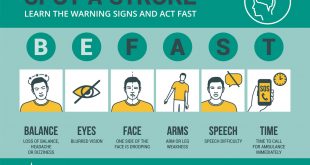By Heidi Smith, Contributor
According to the U.S. Department of Health and Human Services, one in every 20 Americans over the age of 50 has peripheral artery disease (PAD). PAD occurs when arteries narrow, reducing blood flow to arms and legs. Because symptoms of PAD can be confused with general signs of aging, many who suffer from this disease go undiagnosed.
If left untreated, PAD can lead to serious complications, such as loss of a limb. Abdul Ezeldin, M.D., RPVI, FACC, FSCAI, FSVM, FASNC, FASE, is a board-certified cardiologist specializing in interventional cardiology, as well as vein and artery procedures. He has extensive experience in helping patients resolve advanced problems with blood circulation in the legs, heart and carotid arteries. Dr. Ezeldin recently relocated to Venice from Arkansas, where he practiced for more than 20 years. He sees patients at ShorePoint Medical Group and is a member of the medical staff at ShorePoint Health Venice.
Q. What causes PAD?
A. PAD occurs when arteries narrow due to buildup of a fatty material called plaque. Plaque buildup is also called atherosclerosis, or hardening of the arteries. Plaque deposits cause the arteries to stiffen and become narrow, limiting the supply of oxygenated blood throughout the body.
Q. What types of health problems can PAD cause?
A. That depends on which arteries are blocked. Mild cases of PAD cause symptoms like claudication, which is pain when walking as leg muscles do not receive enough oxygenated blood. Severe PAD can cause critical limb ischemia (CLI). Patients with CLI have pain in their legs even when at rest, as well as wounds to lower extremities and feet that can be difficult to heal due to compromised blood flow.
Q. What are the symptoms of PAD?
A. Typical symptoms include pain or tiredness in the feet and legs, buttock pain, and burning or tingling in the feet. Additional symptoms may include sores or breaks in the skin of the legs and feet, loss of hair on the feet and toes, aching feet or toes when at rest, changes in skin color (reddish, bluish or pale discoloration) in the lower extremities, decrease in skin temperature, and impotence in men.
Q. Who is at risk for PAD?
A. Some hardening of arteries and plaque buildup is normal as we grow older, but certain risk factors can lead to PAD sooner. The more risk factors one has, the higher the chances of developing PAD. Some risk factors are smoking, high blood pressure (hypertension), high cholesterol, diabetes, family history of heart or vascular disease, obesity, lack of physical activity, stress, and being older than 50. African-Americans also have a higher risk for PAD.
Q. How do you diagnose PAD?
A. Your doctor will review your medical and family history, risk factors and symptoms. If your doctor suspects that you have PAD, he or she will conduct an examination and series of tests before advising a plan of care. The tests will measure how well blood is flowing through your arteries and identify areas of concern.
Q. If someone is diagnosed with PAD, what are the treatment options?
A. Your doctor will recommend a treatment plan based on your symptoms, test results, medical history and potential risks. This plan may include lifestyle changes and medications to relieve your pain and symptoms, and interventional procedures to increase blood flow through your arteries. Interventional procedures may be non-surgical or surgical.
Q. Could you give some examples of the non-surgical procedures?
A. Non-surgical, or endovascular procedures, are performed inside your artery using a thin, long tube called a catheter. For most patients, these are same-day, outpatient procedures with excellent outcomes. An example is balloon angioplasty, where the doctor inserts a device with a small balloon into the artery. Once the device reaches the narrowing of the affected artery, the balloon is inflated to flatten the plaque, open the artery and restore blood flow. The balloon is then deflated and removed. Another example is placing a stent in the narrowing part of the artery. The stent stays in the artery permanently to maintain blood flow. Sometimes we combine the two therapies with the stent being placed after the balloon is removed.
Additionally, there is a relatively new therapy that includes a drug-coated balloon to help reduce the buildup of plaque over time.
Q. What are some surgical options and when would you use them?
A. There are many types of surgery to address PAD. Two of the most common are endarterectomy and bypass. An endarterectomy removes plaque directly from the inside of the artery wall. This is only used for patients with serious PAD. Bypass is used in even more serious cases where blockages are very long or very hard. This procedure uses a graft (either a healthy blood vessel from another part of the body or a synthetic tube) to reroute the blood flow.
Q. How can a person reduce their risk of developing PAD?
A. It is critical to talk with your doctor about your risk factors. Hardening of the arteries can increase your risk of heart attack, stroke and loss of a leg or foot. Your doctor can help you control or manage your risk factors, while you can adopt a healthy lifestyle, including not smoking, maintaining a healthy diet and weight, and staying active.
Abdul Ezeldin, M.D., RPVI, FACC, FSCAI, FSVM, FASNC, FASE Interventional Cardiologist
ShorePointCardiology.com
(941) 876-5833
 Southwest Florida's Health and Wellness Magazine Health and Wellness Articles
Southwest Florida's Health and Wellness Magazine Health and Wellness Articles

